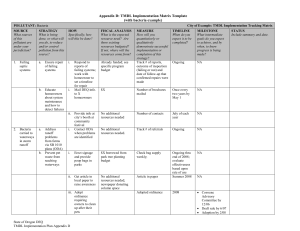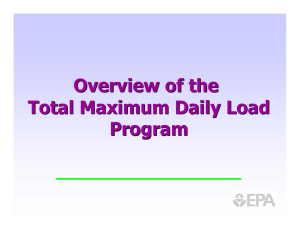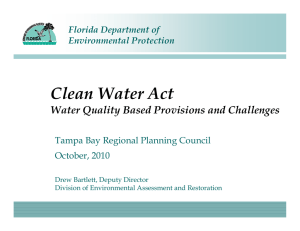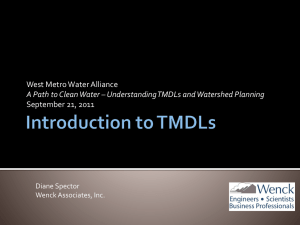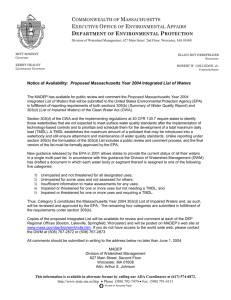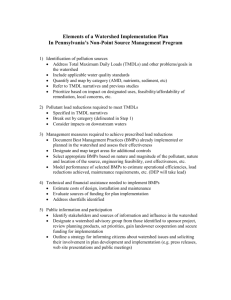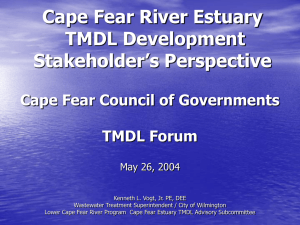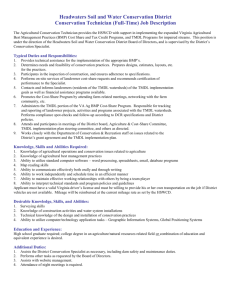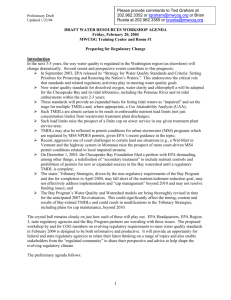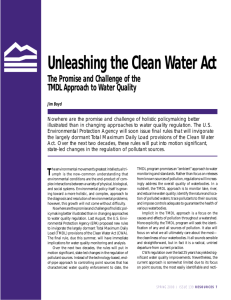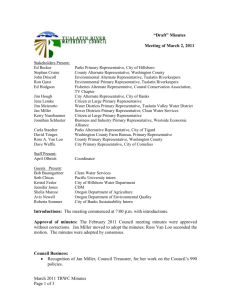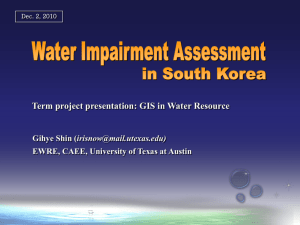1.0 INTRODUCTION The federal Clean Water Act (33 U.S.C.
advertisement
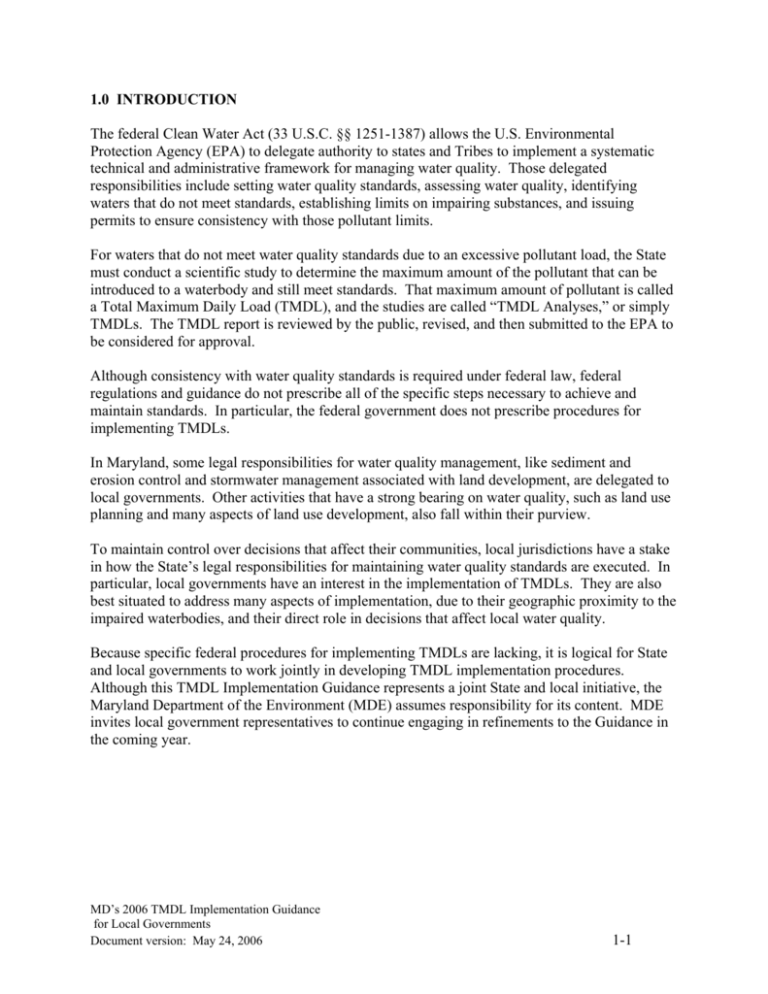
1.0 INTRODUCTION The federal Clean Water Act (33 U.S.C. §§ 1251-1387) allows the U.S. Environmental Protection Agency (EPA) to delegate authority to states and Tribes to implement a systematic technical and administrative framework for managing water quality. Those delegated responsibilities include setting water quality standards, assessing water quality, identifying waters that do not meet standards, establishing limits on impairing substances, and issuing permits to ensure consistency with those pollutant limits. For waters that do not meet water quality standards due to an excessive pollutant load, the State must conduct a scientific study to determine the maximum amount of the pollutant that can be introduced to a waterbody and still meet standards. That maximum amount of pollutant is called a Total Maximum Daily Load (TMDL), and the studies are called “TMDL Analyses,” or simply TMDLs. The TMDL report is reviewed by the public, revised, and then submitted to the EPA to be considered for approval. Although consistency with water quality standards is required under federal law, federal regulations and guidance do not prescribe all of the specific steps necessary to achieve and maintain standards. In particular, the federal government does not prescribe procedures for implementing TMDLs. In Maryland, some legal responsibilities for water quality management, like sediment and erosion control and stormwater management associated with land development, are delegated to local governments. Other activities that have a strong bearing on water quality, such as land use planning and many aspects of land use development, also fall within their purview. To maintain control over decisions that affect their communities, local jurisdictions have a stake in how the State’s legal responsibilities for maintaining water quality standards are executed. In particular, local governments have an interest in the implementation of TMDLs. They are also best situated to address many aspects of implementation, due to their geographic proximity to the impaired waterbodies, and their direct role in decisions that affect local water quality. Because specific federal procedures for implementing TMDLs are lacking, it is logical for State and local governments to work jointly in developing TMDL implementation procedures. Although this TMDL Implementation Guidance represents a joint State and local initiative, the Maryland Department of the Environment (MDE) assumes responsibility for its content. MDE invites local government representatives to continue engaging in refinements to the Guidance in the coming year. MD’s 2006 TMDL Implementation Guidance for Local Governments Document version: May 24, 2006 1-1
